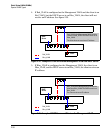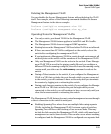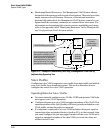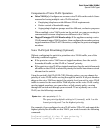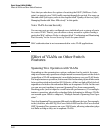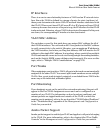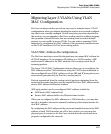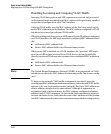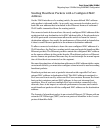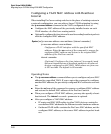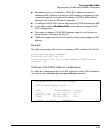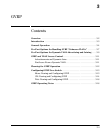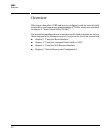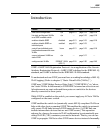
Static Virtual LANs (VLANs)
Migrating Layer 3 VLANs Using VLAN MAC Configuration
Handling Incoming and Outgoing VLAN Traffic
Incoming VLAN data packets and ARP requests are received and processed
on the routing switch according to the MAC address of the previously installed
router that is configured for each VLAN interface.
Outgoing VLAN traffic uses the MAC address of the ProCurve switch as the
source MAC address in packet headers. The MAC address configured on VLAN
interfaces is not used on outbound VLAN traffic.
When the routing switch receives an ARP request for the IP address configured
on a VLAN interface, the ARP reply uses the reconfigured MAC address in both
the:
■ ARP Sender MAC address field
■ Source MAC address field in the Ethernet frame header.
When proxy ARP is enabled on a VLAN interface, the "gracious" ARP reply
sent for an ARP request received from VLAN devices located outside the
directly connected IP subnets also contains the reconfigured MAC address in
the:
■ ARP Sender MAC address field
■ Source MAC address field in the Ethernet frame header.
Note The Virtual Router Redundancy Protocol (VRRP) is not supported on VLAN
interfaces on which the MAC address for incoming traffic has been reconfig-
ured
To hosts in the network, VLAN traffic continues to be routed (using the
reconfigured MAC address as destination address), but outbound VLAN traffic
appears to be sent from another router (using the ProCurve MAC address as
source address) attached to the same subnet. Although it appears as an
asymmetric path to network hosts, the MAC address configuration feature
enables Layer 3 VLAN migration. (A successful VLAN migration is achieved
because the hosts do not verify that the source MAC address and the destina-
tion MAC address are the same when communicating with the routing switch.)
2-66



